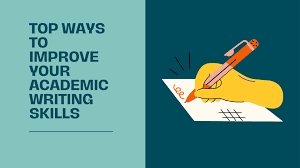Modern Learning Techniques Every Student Should Know in 2025
Education in 2025 is not the same as it was a decade ago. With new technology, research, and changing student needs, learning methods are evolving rapidly. Traditional rote memorization is being replaced with smarter, faster, and more engaging techniques. If you’re a student, teacher, or parent — understanding these modern learning techniques can help improve academic performance and long-term success.
1. Active Learning
Instead of passively listening to lectures, students are now encouraged to actively engage with the content. This includes:
- Group discussions
- Solving real-world problems
- Asking and answering questions
- Teaching others
Studies show active learning improves memory and understanding far more than traditional note-taking.
2. Spaced Repetition
Cramming before exams often leads to forgetting most of the material quickly. In contrast, spaced repetition spreads learning over time, allowing the brain to absorb and retain information more effectively.
Tools like Anki and Quizlet use this technique to help students master tough subjects like languages, medicine, and law.
3. Gamification
Turning lessons into games increases motivation and makes learning fun. Whether it’s earning points, unlocking levels, or completing challenges — gamified learning helps students stay focused.
Popular platforms using gamification include:
- Duolingo (for languages)
- Kahoot! (for quizzes)
- Prodigy (for math)
4. Visual Learning Tools
Many students learn better when information is presented visually. This includes:
- Mind maps
- Infographics
- Educational videos
- Flashcards with images
Visuals help break complex concepts into easy-to-understand ideas and improve long-term recall.
5. Personalized Learning
One-size-fits-all no longer works in today’s classrooms. With AI-based platforms, students can now get customized lessons based on their strengths, weaknesses, and pace.
Apps like Khan Academy and Smart Sparrow adapt content to suit each student’s needs, making learning more effective.
6. Project-Based Learning (PBL)
In PBL, students work on real-world projects instead of just reading textbooks. It improves:
- Critical thinking
- Teamwork
- Creativity
- Communication skills
Examples include science experiments, business simulations, or environmental campaigns.
7. Microlearning
Instead of long lectures, microlearning delivers content in small, focused chunks. This is especially useful for busy learners or those who struggle with attention.
Short video lessons, daily quizzes, and bite-sized reading tasks are all part of this approach.
8. Tech-Integrated Classrooms
Modern classrooms use smart boards, tablets, virtual labs, and online quizzes to make learning interactive. Students can access study material anytime and even attend virtual classes from home.
This hybrid learning environment — a mix of online and offline methods — is becoming the new normal.
9. Mindfulness and Brain Training
Stress is a major barrier to learning. Schools are now introducing mindfulness practices like meditation, breathing exercises, and journaling to help students focus better.
Apps like Headspace and Calm are used by schools to train students in emotional regulation and concentration.
10. Feedback-Driven Improvement
Instead of waiting for final exams, students now get instant feedback through online assessments. This helps them identify weak areas early and improve continuously.
Platforms like Google Classroom, Edmodo, and ClassDojo help teachers give real-time feedback.
Conclusion
The future of learning is all about adapting to students’ needs and making education more interactive, personalized, and practical. Whether you’re a high school student or a college learner, adopting these modern techniques can make a big difference in your academic journey.
Learning isn’t just about scoring high grades — it’s about building skills, solving problems, and preparing for real life. And with the right tools and mindset, every student can succeed in 2025 and beyond.


